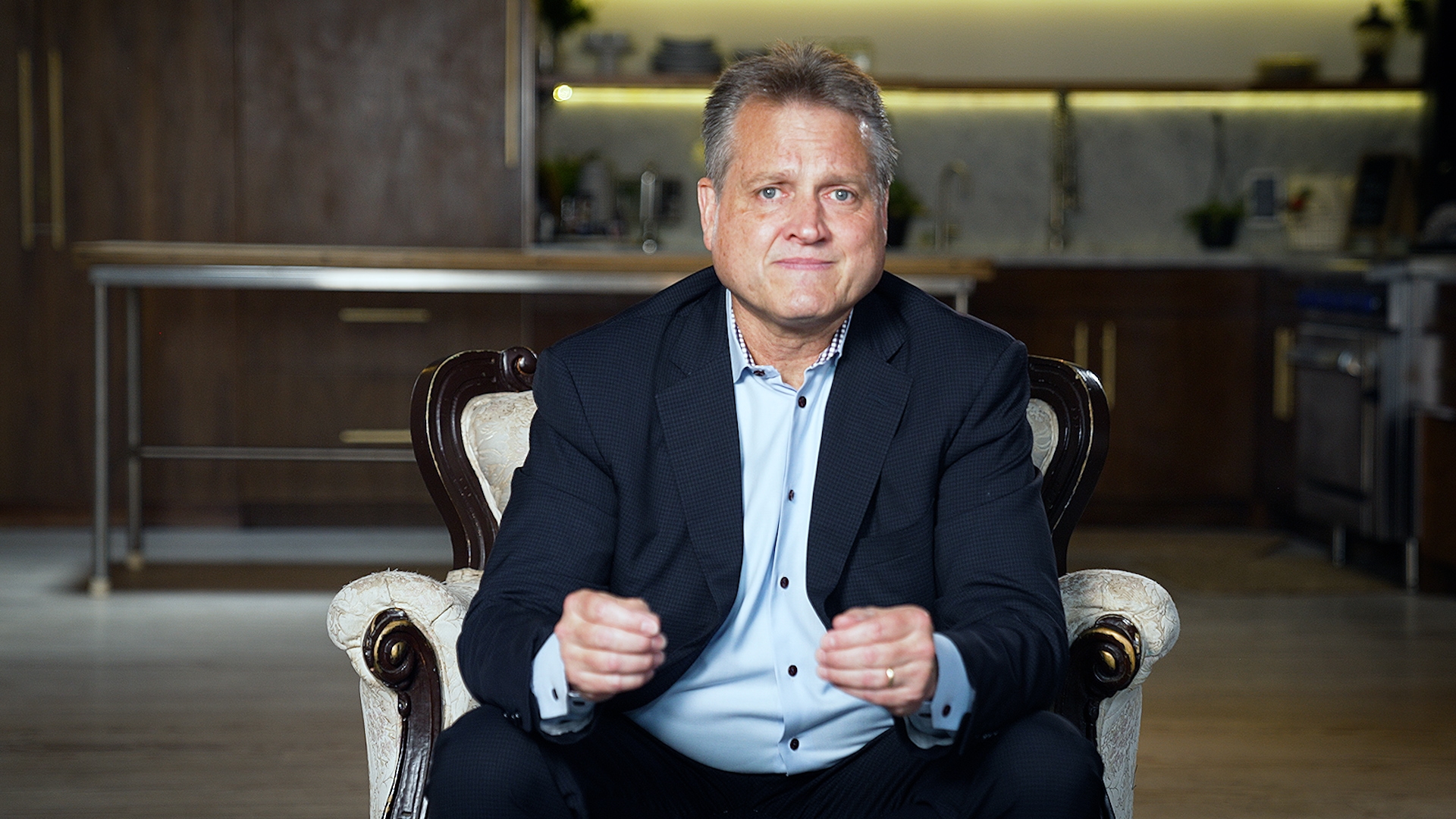 As the world pushes towards a net zero 2050, aviation has a dearth of viable decarbonization solutions and a pressing need for more sustainable aviation fuel to begin reducing its emissions, or else it will face pressure from ESG activists to reduce the number of flightsDavid Kaplan, Principal
As the world pushes towards a net zero 2050, aviation has a dearth of viable decarbonization solutions and a pressing need for more sustainable aviation fuel to begin reducing its emissions, or else it will face pressure from ESG activists to reduce the number of flightsDavid Kaplan, Principal
- About this video
- Transcript
Commercial flights have revolutionized the way we travel. Now aviation must decarbonize to help meet the goal of net-zero emissions by 2050. Here's how.
Oliver Wyman Takes On Series
In this video series, energy and natural resources experts share their take on how businesses can harness risk, turn climate intent into action, and lead in the age of acceleration.
Widely available commercial flights have unlocked travel for humanity in a way that would have been totally unimaginable 100 years ago. However, as the world pushes towards a net zero 2050, aviation has a dearth of viable decarbonization solutions and a pressing need for more sustainable aviation fuel (SAF) to begin reducing its emissions, or else it will face pressure from environmental, social, and governance (ESG) activists to reduce the number of flights.
I am David Kaplan, a member of Oliver Wyman’s Energy Practice, and I specialize in transportation fuels and the energy transition, especially in hard-to-abate sectors such as aviation, rail, trucking, and maritime. I've been working in the downstream fuel space for the last decade and have seen the major strides we have made to decarbonize many sectors, especially light-duty vehicles through electrification, and heavy-duty vehicles through biodiesel and renewable diesel.
While I have worked to decarbonize a wide range of industries and players, today I’m going to focus on SAF, a topic which I've written about a few times over the last couple of years. While aviation has made substantial efficiency gains to slow emissions growth, adoption of SAF, a non-fossil based alternative to Jet A, predominantly made from used cooking oils, waste animal fats, and other sustainable, low-carbon feedstock, is still in its infancy.
To align aviation with a two-degree warming scenario and Net Zero 2050, as targeted under the Paris Agreement, will require massive investment throughout the value chain. Otherwise, the projected 30% growth in air travel from 2019 to 2030 could drive as much as a 20% growth in emissions despite the continued efficiency gains.
But how can the energy and transportation industries come together to successfully attract the trillion plus required investment dollars, both in the next few years and through 2050? What role will regulators and financiers throughout the ecosystem play? But above all, the most common question I hear from players in both the energy and transportation industries is, “How will we close the funding gap between SAF and Jet A that results in a two to three times price differential between the two?”
We have seen some promising initial progress over the last couple of years with both energy companies making commitments to produce SAF, and over 70 airlines globally making commitments to purchase SAF, largely focused on 10% adoption by 2030, which will slow the growth of aviation emissions, but not be sufficient to begin shrinking emissions. This has been supplemented by regulatory action, including the passage of ReFuel EU and the sustainable aviation fuel blenders tax credit in the US. Despite this progress, adoption of SAF remains below 1% globally.
To further accelerate adoption of SAF, we need more urgency and focus from all parties. The Inflation Reduction Act in the US was a great jumpstart for the energy transition, but it had relatively few dollars available for SAF and left the SAF blenders tax credit to expire by 2027. We need additional grants aimed at developing immature SAF production technologies and longer-term clarity from governments on SAF adoption targets and availability of incentives.
For the sake of both energy and aviation players, we also need increased collaboration on investment in SAF. While there have been promising steps on this, with airlines and original equipment manufacturers beginning to invest directly in SAF production and signing some long-term contracts with early-stage producers, we need a continued emphasis on investing and bringing new SAF capacity to market.
When I speak with players throughout the aviation value chain, I always emphasize that these types of long-term agreements and equity participation deals are critical to de-risking new production and ensuring energy players are comfortable with writing the billion dollar plus checks that are required for each new SAF bio refinery.
Lastly, given the higher cost of SAF, we need multiple players throughout the value chain to help close the funding gap. While government incentives are one important component of this, finding commercial models that allow varied players, such as airports and passengers, corporate travelers, and aircraft leasing companies to all participate in the purchase and funding of SAF is critical. This will be crucial in ensuring the whole value chain is aligned with Net Zero 2050 and supporting the growth of the SAF market.
If we make these things happen, the sky is the limit. I'm David Kaplan, and this has been my take on decarbonizing aviation.
This transcript has been edited for clairty
- About this video
- Transcript
Commercial flights have revolutionized the way we travel. Now aviation must decarbonize to help meet the goal of net-zero emissions by 2050. Here's how.
Oliver Wyman Takes On Series
In this video series, energy and natural resources experts share their take on how businesses can harness risk, turn climate intent into action, and lead in the age of acceleration.
Widely available commercial flights have unlocked travel for humanity in a way that would have been totally unimaginable 100 years ago. However, as the world pushes towards a net zero 2050, aviation has a dearth of viable decarbonization solutions and a pressing need for more sustainable aviation fuel (SAF) to begin reducing its emissions, or else it will face pressure from environmental, social, and governance (ESG) activists to reduce the number of flights.
I am David Kaplan, a member of Oliver Wyman’s Energy Practice, and I specialize in transportation fuels and the energy transition, especially in hard-to-abate sectors such as aviation, rail, trucking, and maritime. I've been working in the downstream fuel space for the last decade and have seen the major strides we have made to decarbonize many sectors, especially light-duty vehicles through electrification, and heavy-duty vehicles through biodiesel and renewable diesel.
While I have worked to decarbonize a wide range of industries and players, today I’m going to focus on SAF, a topic which I've written about a few times over the last couple of years. While aviation has made substantial efficiency gains to slow emissions growth, adoption of SAF, a non-fossil based alternative to Jet A, predominantly made from used cooking oils, waste animal fats, and other sustainable, low-carbon feedstock, is still in its infancy.
To align aviation with a two-degree warming scenario and Net Zero 2050, as targeted under the Paris Agreement, will require massive investment throughout the value chain. Otherwise, the projected 30% growth in air travel from 2019 to 2030 could drive as much as a 20% growth in emissions despite the continued efficiency gains.
But how can the energy and transportation industries come together to successfully attract the trillion plus required investment dollars, both in the next few years and through 2050? What role will regulators and financiers throughout the ecosystem play? But above all, the most common question I hear from players in both the energy and transportation industries is, “How will we close the funding gap between SAF and Jet A that results in a two to three times price differential between the two?”
We have seen some promising initial progress over the last couple of years with both energy companies making commitments to produce SAF, and over 70 airlines globally making commitments to purchase SAF, largely focused on 10% adoption by 2030, which will slow the growth of aviation emissions, but not be sufficient to begin shrinking emissions. This has been supplemented by regulatory action, including the passage of ReFuel EU and the sustainable aviation fuel blenders tax credit in the US. Despite this progress, adoption of SAF remains below 1% globally.
To further accelerate adoption of SAF, we need more urgency and focus from all parties. The Inflation Reduction Act in the US was a great jumpstart for the energy transition, but it had relatively few dollars available for SAF and left the SAF blenders tax credit to expire by 2027. We need additional grants aimed at developing immature SAF production technologies and longer-term clarity from governments on SAF adoption targets and availability of incentives.
For the sake of both energy and aviation players, we also need increased collaboration on investment in SAF. While there have been promising steps on this, with airlines and original equipment manufacturers beginning to invest directly in SAF production and signing some long-term contracts with early-stage producers, we need a continued emphasis on investing and bringing new SAF capacity to market.
When I speak with players throughout the aviation value chain, I always emphasize that these types of long-term agreements and equity participation deals are critical to de-risking new production and ensuring energy players are comfortable with writing the billion dollar plus checks that are required for each new SAF bio refinery.
Lastly, given the higher cost of SAF, we need multiple players throughout the value chain to help close the funding gap. While government incentives are one important component of this, finding commercial models that allow varied players, such as airports and passengers, corporate travelers, and aircraft leasing companies to all participate in the purchase and funding of SAF is critical. This will be crucial in ensuring the whole value chain is aligned with Net Zero 2050 and supporting the growth of the SAF market.
If we make these things happen, the sky is the limit. I'm David Kaplan, and this has been my take on decarbonizing aviation.
This transcript has been edited for clairty
Commercial flights have revolutionized the way we travel. Now aviation must decarbonize to help meet the goal of net-zero emissions by 2050. Here's how.
Oliver Wyman Takes On Series
In this video series, energy and natural resources experts share their take on how businesses can harness risk, turn climate intent into action, and lead in the age of acceleration.
Widely available commercial flights have unlocked travel for humanity in a way that would have been totally unimaginable 100 years ago. However, as the world pushes towards a net zero 2050, aviation has a dearth of viable decarbonization solutions and a pressing need for more sustainable aviation fuel (SAF) to begin reducing its emissions, or else it will face pressure from environmental, social, and governance (ESG) activists to reduce the number of flights.
I am David Kaplan, a member of Oliver Wyman’s Energy Practice, and I specialize in transportation fuels and the energy transition, especially in hard-to-abate sectors such as aviation, rail, trucking, and maritime. I've been working in the downstream fuel space for the last decade and have seen the major strides we have made to decarbonize many sectors, especially light-duty vehicles through electrification, and heavy-duty vehicles through biodiesel and renewable diesel.
While I have worked to decarbonize a wide range of industries and players, today I’m going to focus on SAF, a topic which I've written about a few times over the last couple of years. While aviation has made substantial efficiency gains to slow emissions growth, adoption of SAF, a non-fossil based alternative to Jet A, predominantly made from used cooking oils, waste animal fats, and other sustainable, low-carbon feedstock, is still in its infancy.
To align aviation with a two-degree warming scenario and Net Zero 2050, as targeted under the Paris Agreement, will require massive investment throughout the value chain. Otherwise, the projected 30% growth in air travel from 2019 to 2030 could drive as much as a 20% growth in emissions despite the continued efficiency gains.
But how can the energy and transportation industries come together to successfully attract the trillion plus required investment dollars, both in the next few years and through 2050? What role will regulators and financiers throughout the ecosystem play? But above all, the most common question I hear from players in both the energy and transportation industries is, “How will we close the funding gap between SAF and Jet A that results in a two to three times price differential between the two?”
We have seen some promising initial progress over the last couple of years with both energy companies making commitments to produce SAF, and over 70 airlines globally making commitments to purchase SAF, largely focused on 10% adoption by 2030, which will slow the growth of aviation emissions, but not be sufficient to begin shrinking emissions. This has been supplemented by regulatory action, including the passage of ReFuel EU and the sustainable aviation fuel blenders tax credit in the US. Despite this progress, adoption of SAF remains below 1% globally.
To further accelerate adoption of SAF, we need more urgency and focus from all parties. The Inflation Reduction Act in the US was a great jumpstart for the energy transition, but it had relatively few dollars available for SAF and left the SAF blenders tax credit to expire by 2027. We need additional grants aimed at developing immature SAF production technologies and longer-term clarity from governments on SAF adoption targets and availability of incentives.
For the sake of both energy and aviation players, we also need increased collaboration on investment in SAF. While there have been promising steps on this, with airlines and original equipment manufacturers beginning to invest directly in SAF production and signing some long-term contracts with early-stage producers, we need a continued emphasis on investing and bringing new SAF capacity to market.
When I speak with players throughout the aviation value chain, I always emphasize that these types of long-term agreements and equity participation deals are critical to de-risking new production and ensuring energy players are comfortable with writing the billion dollar plus checks that are required for each new SAF bio refinery.
Lastly, given the higher cost of SAF, we need multiple players throughout the value chain to help close the funding gap. While government incentives are one important component of this, finding commercial models that allow varied players, such as airports and passengers, corporate travelers, and aircraft leasing companies to all participate in the purchase and funding of SAF is critical. This will be crucial in ensuring the whole value chain is aligned with Net Zero 2050 and supporting the growth of the SAF market.
If we make these things happen, the sky is the limit. I'm David Kaplan, and this has been my take on decarbonizing aviation.
This transcript has been edited for clairty




